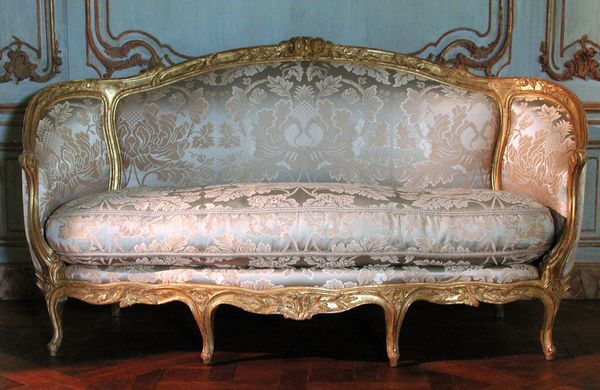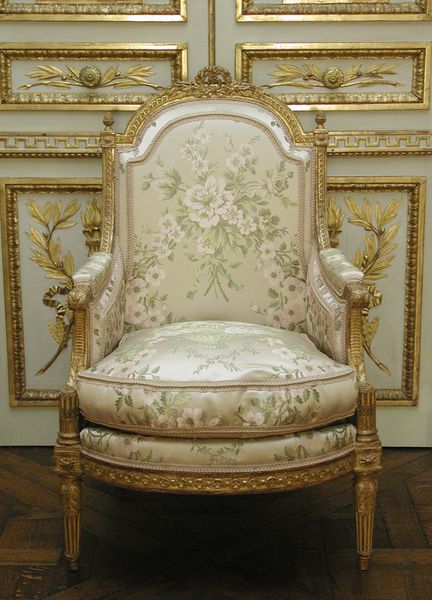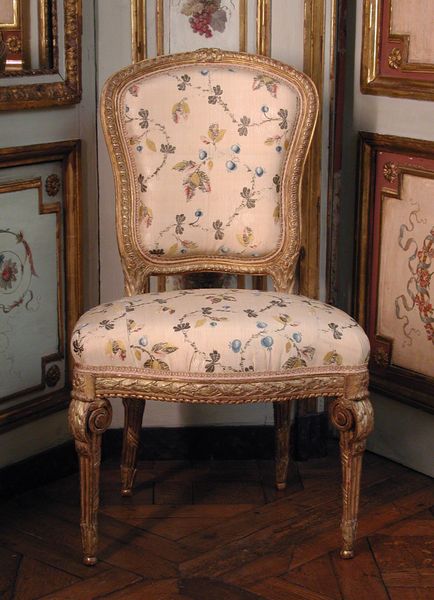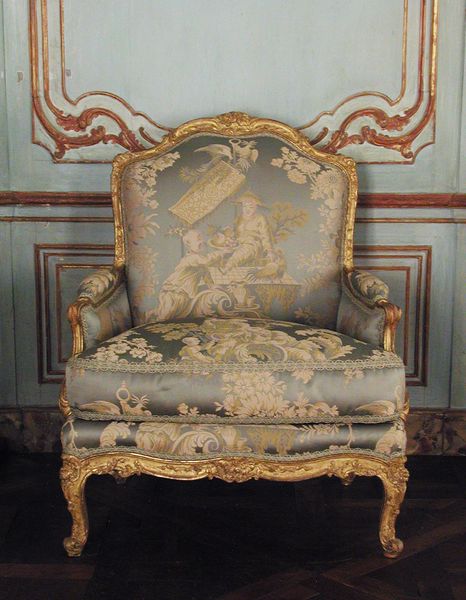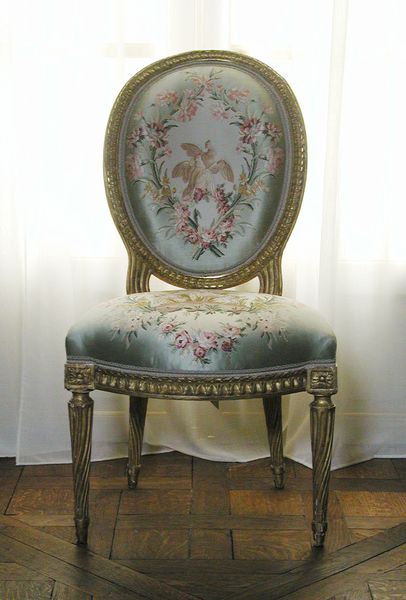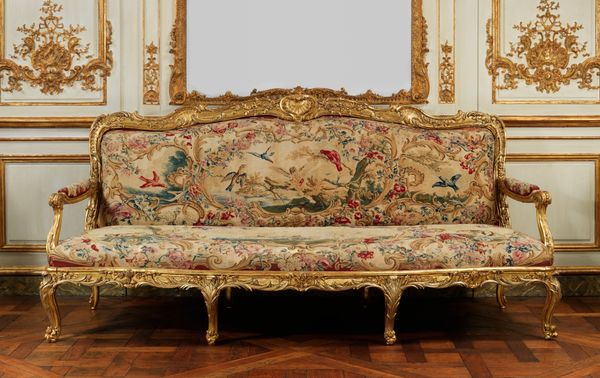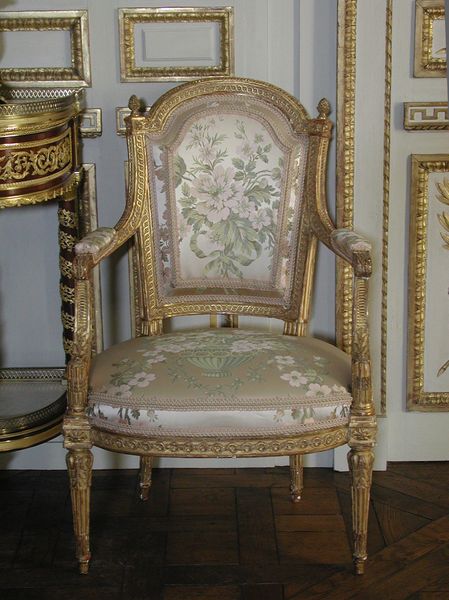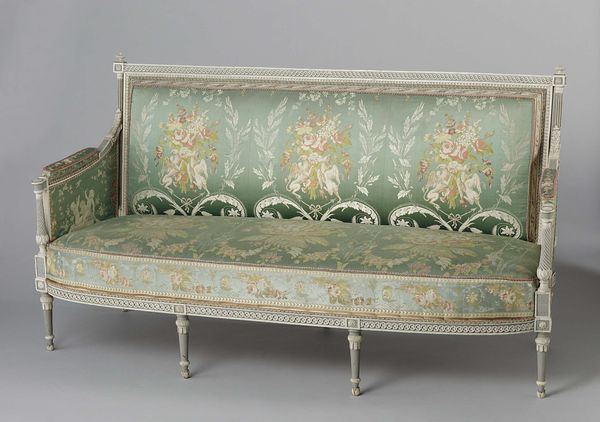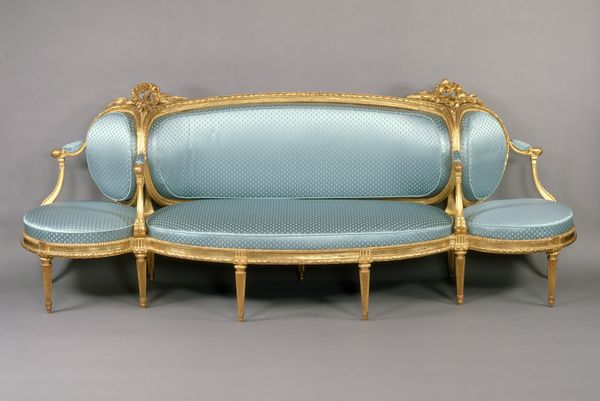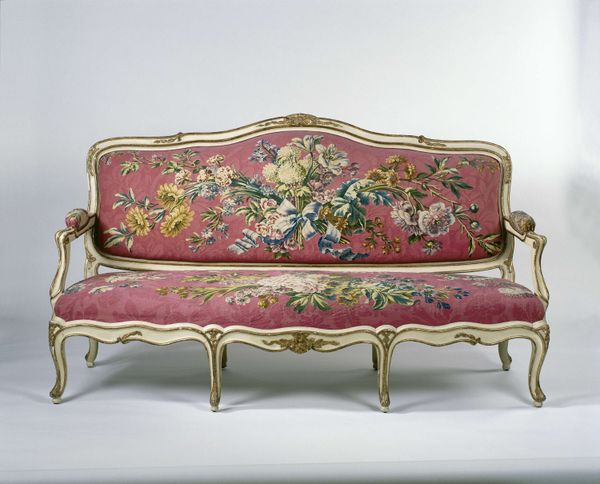
weaving, textile, sculpture, wood
#
weaving
#
furniture
#
textile
#
sculpture
#
interior architecture photography
#
wood
#
decorative-art
#
rococo
Dimensions: Overall: 44 × 76 1/2 × 27 in. (111.8 × 194.3 × 68.6 cm)
Copyright: Public Domain
Curator: Looking at this Rococo sofa, or "canapé" as it would have been known then, made between 1765 and 1775, it is interesting to consider the world it represents, one of extreme wealth and elaborate social rituals. Editor: My immediate impression is how the light plays across its surfaces—the way the gilding picks up the ambient light, juxtaposed against the cool blues and greens of the textile. I wonder about the skills of the weavers and carpenters involved. Curator: It really epitomizes the Rococo style, doesn't it? The curving lines, the delicate ornamentation. And think of where something like this would be placed – in a salon, used for receiving guests, projecting status and power. This would have been a pivotal location for the aristocracy and their carefully constructed public image. Editor: Precisely! And let’s consider those textiles; someone designed the pattern, chose the dyes, operated the loom. Who were they? What were their working conditions like, creating this backdrop for the aristocracy's display? These objects tell us just as much about labor and consumption as they do about artistic patronage. Curator: I agree completely. These objects always have complex social contexts. Think about how furniture like this was instrumental in solidifying class distinctions. Sumptuous textiles, finely carved wood, all reflecting the societal hierarchy. This sofa was an indicator and reinforcer of societal place. Editor: It's important not to separate the artistic skill from the means of production. You can see the hands involved. Looking at the craftsmanship and materials provides a crucial lens for interpreting not just artistic intentions but societal practices and systems that supported these creations. Curator: Seeing this "canapé," it underscores the power dynamics inherent in art and its production and its vital social functions at this specific moment in time. Editor: Ultimately, seeing how such decorative items were conceived and realized enables a deeper engagement with material culture and how it speaks of societal values.
Comments
No comments
Be the first to comment and join the conversation on the ultimate creative platform.
